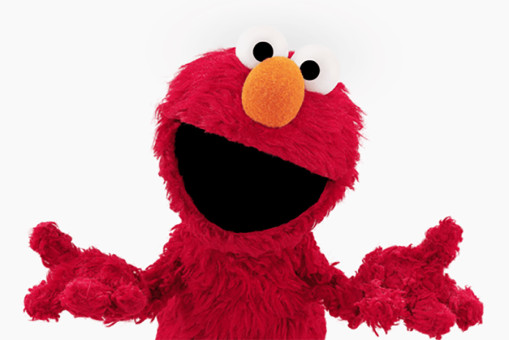Don't tell Bert or Ernie, but more than a half-century ago few believed that an experiment in children's television known as Sesame Street would succeed. The series, which debuted on PBS on November 10, 1969, soon enraptured kids and parents with its mix of education and entertainment. Its episodes, old and new, still circle the globe every day (first-run episodes now stream on HBO Max), challenging social norms and inspiring imaginations.
"Considering we're talking about five generations of people who have grown up with this show, it's hard to estimate what we've learned from Sesame Street," says Trevor Crafts, who produced the 2021 HBO documentary feature Street Gang: How We Got to Sesame Street and then wrote a companion book, The Unseen Photos of Street Gang: How We Got to Sesame Street (Harry N. Abrams, 2021).
A lifelong fan of the show, Crafts wanted to explore its genesis, so for his film he optioned Michael Davis's book, Street Gang: The Complete History of Sesame Street (Viking, 2008), which chronicles the show from its inception through 2008.
"Like every documentary, a lot gets left on the cutting room floor," says Crafts, who produced the film with Ellen Scherer Crafts and Lisa Diamond. "But we're in such an amazing time of media and being able to tell stories in so many different ways, why couldn't we take this documentary, expand the stories and resurrect the things we lost in the process of making it?"
The idea for the book struck Crafts as he was sorting through files on his computer and saw a photo the late David Attie had taken during Sesame Street's first season. Attie's images — shot for a behind-the-scenes magazine feature — form the basis of the new book. They came to Crafts via David's son Eli Attie, a coexecutive producer of Billions and an Emmy winner for the 2002 West Wing documentary special.
Crafts explains: "There was this picture of [groundbreaking puppeteers] Jim Henson and Frank Oz performing for kids on the side of the stage. I was absolutely blown away by the quality of the image. And I was frustrated, wondering why we didn't use it in the movie.
"Looking through the file folder, there wasn't a question: we had to do something with the stories we couldn't fully tell in the film. We could use additional information from interviews we did with Sonia Manzano, who played Maria, or [actress] Holly Robinson Peete, who is the daughter of Matt Robinson, the first [actor to play] Gordon."
Attie, who was a child when his dad died, estimates that his father took approximately 500 photos on the Sesame Street set, shooting everything from little details to the image of Henson and Oz that struck Crafts.
"Whether it was purely experimental or was leading toward something else, these [photos] show a unique view of an artist — in his work and in his process — and show an interconnection of ideas within this Sesame Street universe," Crafts says. "All these elements together are why this collection of David's work is so powerful."
One of Crafts's goals in both the film and the book was to show that the wizards behind the curtain were every bit as magical as the characters in front of it, from Henson and Oz to Sesame Street creator Joan Ganz Cooney and director Jon Stone.
"Being able to recall Jon Stone's contribution was one of the most important things we did, in addition to introducing more people to Joe Raposo, the composer of 'Sunny Day' and all the other wonderful songs we love," Crafts says. "These people were of a level of creativity that not a lot of us get to."
Sensing a depth of understanding in Attie's images, Crafts believes the photographer felt a kinship with his subjects. "David gravitated toward those people, and that's why there's such a wonderful volume and quality to those photos, and why they're so experimental," he says. "David tried things most photographers weren't doing then, and Sesame Workshop [originally Children's Television Workshop] tried many things that had never been done before.
"Artists like these need to be celebrated. We need to be reminded that these people, these wonderful creators helped change the world."
As a TV producer himself, Attie — whose toddler daughter is obsessed with Sesame Street — calls the show the Rosetta Stone of modern television, thanks to its influence on generations of writers and producers. He wrote the preface to the book; Manzano wrote the afterword.
"Sesame Street has to be one of the three most important TV shows of all time," Attie says. "Maybe the most important, because I can't think of another show that pretty much raised us all. It gives me goosebumps to think that my dad was in the middle of all this history as it was being created."
This article originally appeared in emmy magazine issue #4, 2022.
















